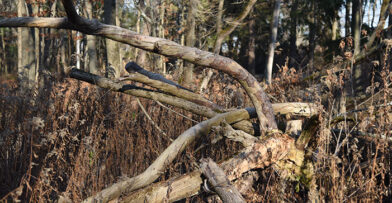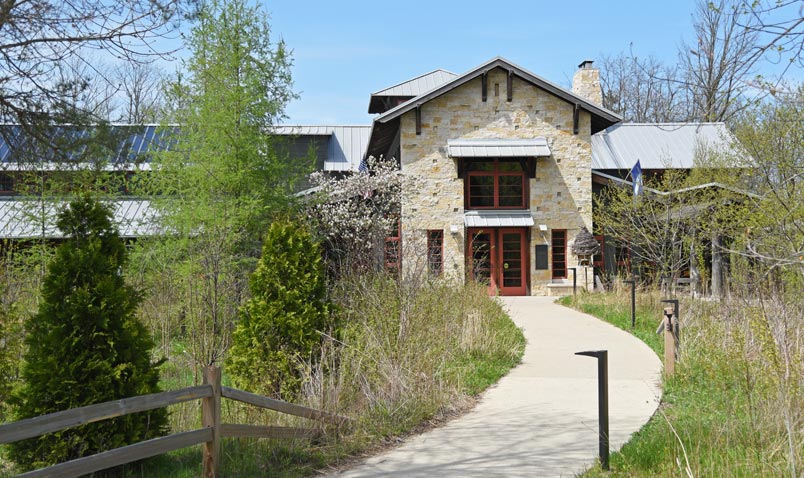
The Importance of Coarse Woody Habitat
When visitors hike our Central Wetlands Loop, Elizabeth Trail, and our other forested areas, you… Read Story >

Ahead of its time when built in 2003, our green building was one of the nation’s most environmentally conscious Gold LEED-certified green buildings. The structure is called the Dorothy K. Vallier Environmental Learning Center, named after our founder.
Our education center received Wisconsin’s first Gold LEED (Leadership in Energy and Environmental Design) award from the U.S. Building Council. The LEED system awards points for incorporating green building practices such as natural ventilation, passive solar heating and cooling, daylighting, use of recycled and recyclable materials, as well as reliance on renewable energy sources. Our building was designed by Kubala Washatko Architects, a firm that has gone on to create other environmentally conscious structures such as Leopold Legacy Center, Urban Ecology Center, and additions to the International Crane Foundation.
When exploring our building you will find both obvious and subtle techniques to limit our impacts on the environment. Extensive use of natural light with specially designed and placed windows reduces the energy needed for lighting. Our geothermal heating system uses 90 groundwater wells and the Earth’s temperature to provide heating and cooling, lessening our dependence on fossil fuels. A 10-kilowatt photovoltaic solar power system, donated by We Energies, supplies 10 to 20 percent of the building’s electricity. Low-flow plumbing reduces our water usage.
Our Nature Preschool was designed to be an extension of nature for a seamless transition between the learning experience outdoors and in. The classrooms feature natural lighting and large, expansive windows with views of the woods and prairie, and provide a space for creative indoor play. The furniture and interior architecture, including tree houses, create a nature-themed classroom.
We have four outdoor classrooms that utilize natural elements as play space equipment. Our students can crawl through hollowed-out logs, balance on tree cookies, sled down slopes, play in our outdoor mud kitchen, and engineer experiments using water from our rain barrel. We develop a sense of community and environmental awareness by playing, exploring, and making friends in spaces that are green and growing.
Our Raptor Exhibit performs important ecological functions, in addition to inviting visitors to see a raptor up close. Beneath the exhibit is a concrete and gravel structure, which functions to retain and dissipate stormwater during rain events. This keeps water and snow melt from residing too close to the main building while allowing it to be absorbed back into the soil.
Center staff created a Sustainability Committee to explore ways we can continue to increase our efficiency and lessen our environmental impact. Through this committee, we began to compost all of our food waste through Compost Crusader. Food is composted by our employees and from weddings and other catered events. Additionally, we installed a water bottle fountain at our first floor bubbler. This water bottle filler reinforces the concept of using renewable bottles while making it easier to fill one’s water bottle.